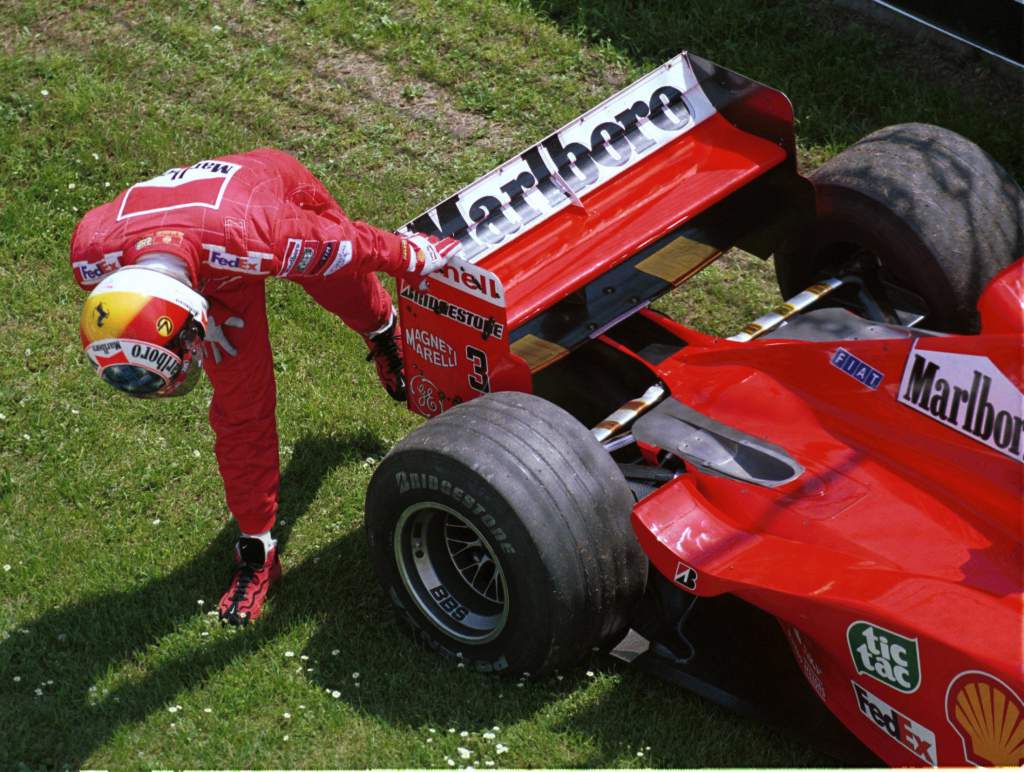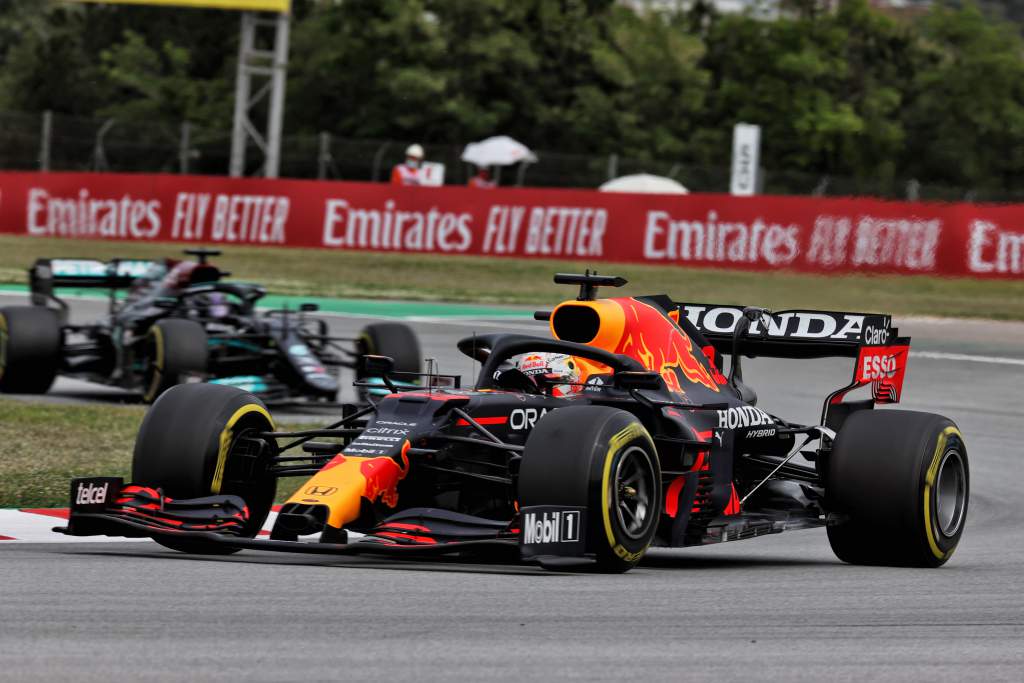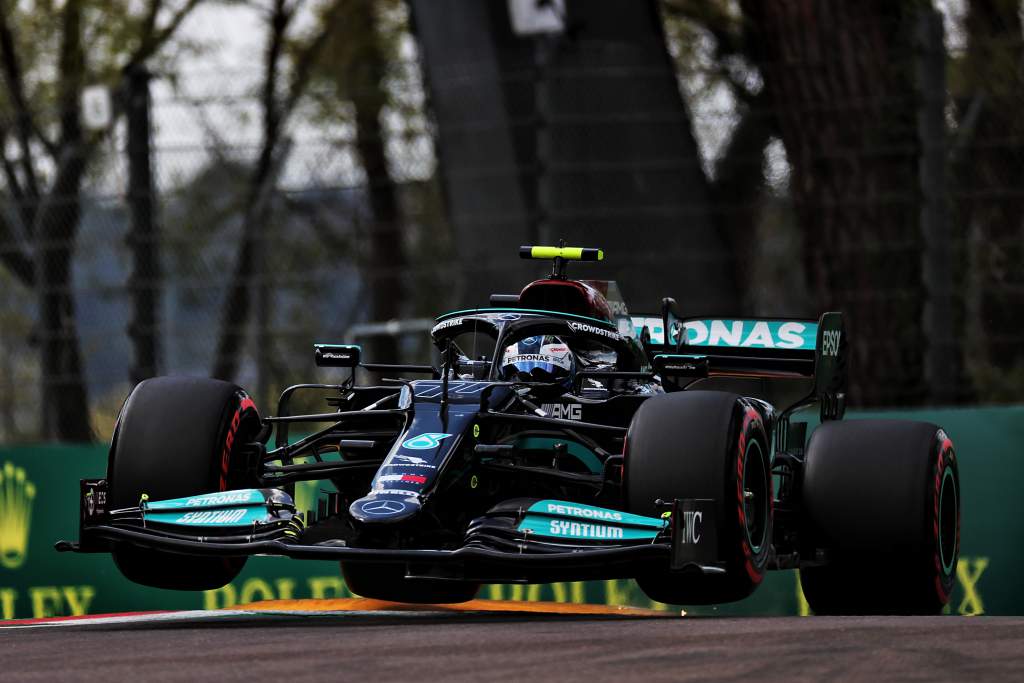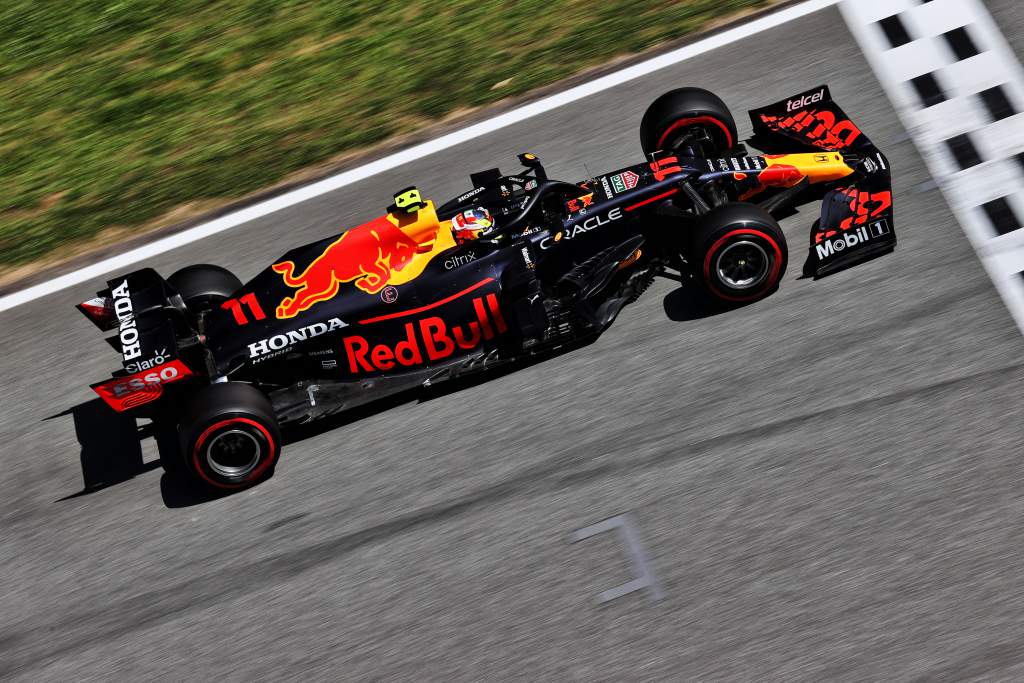Up Next

The war of words over flex-wings in Formula 1 continues. On one side, we have had Red Bull team principal Christian Horner and Alfa Romeo boss Frederic Vasseur hitting out at the FIA for changing the load tests mid-season, and on the other side Mercedes team principal Toto Wolff and McLaren’s Andreas Seidl complaining about the delay in implementing the changes until after the Azerbaijan Grand Prix.
As far as I am concerned, this issue of flexing wings is now way out of control. The regulations as they stand cover it very well, and although I’m not against increasing the loads or decreasing the deflection permitted in the load tests, this needs to happen for 2022 and not before.
It seems the current trend when any team has a gripe is to hint at legal action. That’s what Aston Martin team principal Otmar Szafnauer did with regards to the aerodynamic regulation changes implemented for 2021 – although he has now backed away from that position – and now it’s a similar threat from Wolff with his talk about protests and the FIA International Court of Appeal.
Long gone are the days when Bernie Eccelstone would sit everyone down and do his best to ensure they didn’t bring the sport into dispute. Usually, he found a resolution before things got out of control.
Let’s look at the regulations. If policed to the letter of the law, Article 3.8 of the technical regulations applies to the entire car. If any component on the sprung mass is seen moving relative to any other component on the sprung mass while on track then the FIA has the right to tell teams to rectify it.
Article 3.8 of the technical regulations governs what is called ‘aerodynamic influence’. This states that any bodywork, except for exemptions such as for the DRS, “must be rigidly secured to the entirely sprung part of the car (rigidly secured means not having any degree of freedom)”.
That covers front wing, rear wing, T-wing, bargeboard components, engine cover fin and so on. The list is endless and this regulation is there as a catch-all. But it has always been subjectively enforced. The question is, what is movement?
When you have load changes to the level the surfaces on a Formula 1 car experience on track, it’s impossible to not have some level of deflection. These cars run at up to 360km/h and at that level will be producing something like 2000kg of downforce from surfaces. If Article 3.8 was rigidly (no pun intended… well, maybe a little bit) enforced the car weights would have to be increased once again.

That subjectivity was why the load tests on various areas of the car were first introduced in 1999. Thankfully, gone are the days of Charlie Whiting coming and standing on the sides of the floor to check its deflection and, in turn, legality. There are load tests governing the wing deflection problem that has reared its ugly head and, realistically, if the components pass those tests, then to me that is fine.
But over and above that, the FIA needs to look at these components’ fixings to check that there are no trick mountings that would change the linearity of the parts when the circuit loads go over and above the test loads. This is the point at which things go past what is acceptable as this is different to aero parts simply deflecting slightly more under increased loads.
It is possible to arrange the layup of the carbon weave to allow the component to have some level of flexibility, but I don’t know of a way to arrange it to be non-linear and then recover from that increased deflection.
To police this, it’s never as simple as increasing the loads. The way it’s tested is with point loads – so applied to a specific area on the aero surface – and not overall surface loads.
As we all know, aerodynamic loads are distributed over the complete surface of a component so giving it a push with a hydraulic ram even if the load is spread over a reasonable area is very different from what these components go through on the track.

At the bottom of this article, the load tests in question reproduced in full. It’s worth having a read to see the full extent of them. These regulations cover the front wing, floor tongue, floor sides and rear wing.
They are not easy to pass given the forces involved, so to optimise them to achieve the maximum deflection within those limits and do it consistently is a huge challenge.
That’s why, although I don’t often agree with Horner, my humble opinion on this subject is that he is correct.
These cars are designed and built to a set of regulations. That’s the challenge faced by all the teams and changing those load tests mid-season is not in line with everything else that’s going on in F1, in particular the cost cap. This was something that Vasseur talked about during the Monaco Grand Prix weekend, which I can sympathise with given Alfa Romeo is a team operating below the cost cap.
Horner also pointed out that Mercedes appears to have less concerns about the flexibility of the front wing. His suggestion is that Mercedes is happy with that because it has got a design that’s working well in terms of flexibility but has a rear wing that is relatively rigid. Again, the argument made by Wolff is based in eliminating a competitive advantage for the opposition.
“The cars are built to be optimised to the regulations,” said Horner. “It’s a competition at the end of the day, and there are tests that are in place for the FIA to check a car’s compliance, which is what they do and they vary those tests from time to time.
“But the whole car is under aerodynamic influence, and a lot of noise is being made about the rear wing of the car but just look at some footage from Imola at the front of our competitor’s car and it’ll show you very clearly flexible aerodynamics. As we know, the front wing is a far more sensitive part of the car than the rear of the car.”

To explain what he means here, reducing the front wing angle with speed moves the centre of pressure rearward for high speed corners. In turn, this means it moves forward relatively as you slow down, reducing the understeer in slower corners.
Reducing the rear wing angle with speed will move the centre of pressure forward so, working against what you are trying to achieve with the front wing. Unless, that is, you have a mechanism that supports the rear wing load until you exit the fastest demanding corner and then lets the wing back off, reducing the drag.
Horner continues: “So, you pick on one part of the car, inevitably that is just going to move around. Of course, that’s very difficult for the FIA to police, which is why they’re continually evolving these checks and processes which each team then obviously has to comply with.
“But to think that everybody’s aerodynamic surface was completely rigid would be a fallacy – on every single car on the grid it’s just not the case, you can visibly see that.”
As for Wolff, he effectively incriminated his team with his statement in response.
“We’ve analysed the front wings, and they are bending exactly the same way, the Red Bull and the Mercedes wing,” said Wolff.
He later added: “But it’s clear that the rear wing bends more than it should under the rules, it has been classified as non-conformant.”

I would read this as him saying the FIA is allowing Red Bull to race a non-compliant car. But if the rear wing flexing is a problem, then the front wing on both cars would also have to be a problem.
There is a very simple way to sort this out. We often see the teams measuring its front wing deflection with a camera focused on a reference target on the front wing endplates, so the technology exists. The FIA could simply request that all teams focus the FOM rollbar camera on the top of the rear wing flap, stick a reference target on it at each end and – hey ho – you will have a deflection-to-speed graph. It’s easy to check who has a non-linear deflection and if so they need to justify it or pack up their truck.
Exactly the same could be done with the front wings.
While there are rules allowing a certain deflection under the tests, if you want to rigidly apply the catch-all rule preventing flexibility, then it would have to apply to everything. You can’t have your cake and eat it.
TECHNICAL REGULATIONS: LOAD TESTS
3.9 Bodywork flexibility
3.9.1 Bodywork may deflect no more than 15mm vertically when a 1000N load is applied vertically to it at points 700mm and 1000mm forward of the front wheel centre line and 895mm from the car centre plane. The load will be applied symmetrically to both sides of the car, and in a downward direction using a 50mm diameter ram on a rectangular adapter measuring 400mm x 150mm. This adapter must be supplied by the team and:
a. Have a flat top surface without recesses.
b. Be fitted to the car so as to apply the full load to the bodywork at the test point and not to increase the rigidity of the parts being tested.
c. Be placed with the inner 400mm edge parallel to the car centre plane and displaced from it by 820mm.
d. Be placed with its forward edge 1050mm forward of the front wheel centre line.
The deflection will be measured along the loading axis at the bottom of the bodywork at this point and relative to the reference plane.
The same test described in the present Article will be also applied asymmetrically (i.e. on the one side of the car only), and in this case the bodywork may not deflect more than 20mm.
3.9.2 Bodywork may deflect no more than 8mm vertically when a 500N load is applied vertically to it 450mm forward of the rear wheel centre line and 600mm from the car centre plane. The load will be applied in a downward direction using a 50mm diameter ram and an adapter of the same size. Teams must supply the latter when such a test is deemed necessary.
3.9.3 Bodywork may deflect by no more than one degree horizontally when a load of 1000N is applied simultaneously to its extremities in a rearward direction 825mm above the reference plane and 20mm forward of the forward edge of the rear wing endplate at 825mm above the reference plane.
3.9.4 Bodywork may deflect no more than 3mm vertically when a 500N load is applied simultaneously to each side of it 250mm behind the rear wheel centre line, 375mm from the car centre plane and 890mm above the reference plane. The deflection will be measured at the outer extremities of the bodywork at a point 395mm behind the rear wheel centre line.
The load will be applied in a downward direction through pads measuring 200mm x 100mm which conform to the shape of the bodywork beneath them, and with their uppermost horizontal surface 890mm above the reference plane. The load will be applied to the centre of area of the pads. Teams must supply the latter when such a test is deemed necessary.
3.9.5 Bodywork may deflect no more than 5mm vertically when a 4000N load is applied vertically to it at three different points which lie on the car centre plane and 100mm either side of it. Each of these loads will be applied in an upward direction at a point 480mm rearward of the front wheel centre line using a 50mm diameter ram in the two outer locations and a 70mm diameter ram on the car centre plane.
Stays or structures between the front of the bodywork lying on the reference plane and the survival cell may be present for this test, provided they are completely rigid and have no system or mechanism which allows non-linear deflection during any part of the test.
Furthermore, the bodywork being tested in this area may not include any component which is capable of allowing more than the permitted amount of deflection under the test load (including any linear deflection above the test load), such components could include, but are not limited to:
a. Joints, bearings pivots or any other form of articulation.
b. Dampers, hydraulics or any form of time dependent component or structure.
c. Buckling members or any component or design which may have any non-linear characteristics.
d. Any parts which may systematically or routinely exhibit permanent deformation.
3.9.6 The uppermost aerofoil element lying behind the rear wheel centre line may deflect no more than 7mm horizontally when a 500N load is applied horizontally. The load will be applied 870mm above the reference plane at three separate points which lie on the car centre plane and 270mm either side of it. The loads will be applied in a rearward direction using a suitable 25mm wide adapter which must be supplied by the relevant team.
3.9.7 The forward-most aerofoil element lying behind the rear wheel centre line and which lies more than 630mm above the reference plane may deflect no more than 2mm vertically when a 200N load is applied vertically. The load will be applied in line with the trailing edge of the element at any point across its width.
The loads will be applied using a suitable adapter, supplied by the relevant team, which:
a. May be no more than 50mm wide.
b. Which extends no more than 10mm forward of the trailing edge.
c. Incorporates an 8mm female thread in the underside.
3.9.8 Any part of the trailing edge of any front wing flap may deflect no more than 5mm, when measured along the loading axis, when a 60N point load is applied normal to the flap.
3.9.9 In order to ensure that the requirements of Article 3.8 are respected, the FIA reserves the right to introduce further load/deflection tests on any part of the bodywork which appears to be (or is suspected of), moving whilst the car is in motion.






